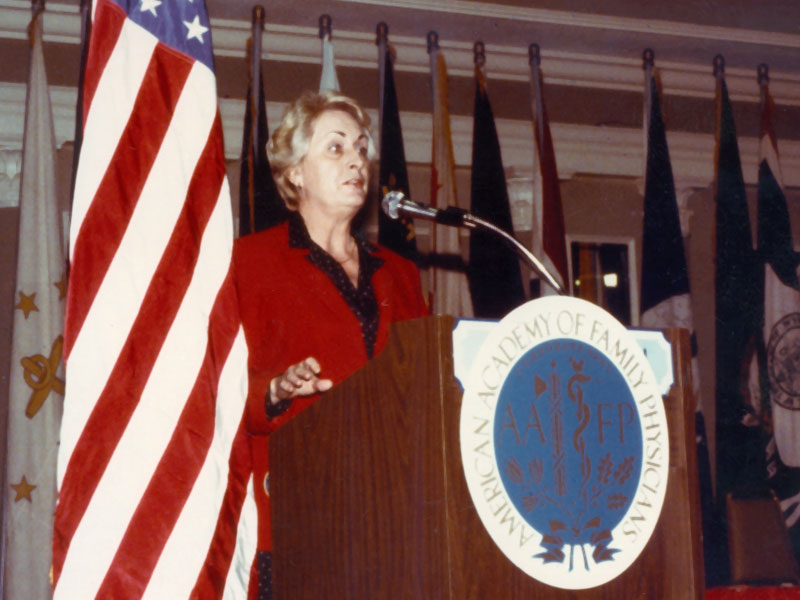Scheduled maintenance is planned for Dec. 13–14. You may experience brief interruptions during this time.
From the Transcripts:
Interviewer: You’re gonna clearly be remembered for many things … but I’d like to ask you, what would you like to be remembered for?
F. Marian Bishop: “Well, time will lose this, but it’s become rather interesting that I am frequently now introduced as the mother of family medicine – academic family medicine, not family practice. And I think that’s great as long as somebody doesn’t finally come up with being the grandmother for academic family medicine.”

Do you know who F. Marian Bishop is and what she accomplished?
If not, no worries. You still have time to learn about – and from – this record-setting, barrier-breaking family medicine leader. Thanks to the AAFP Foundation’s Center for the History of Family Medicine (CHFM), Marian Bishop’s story is simply a click away.
“Marian Bishop was an extraordinary individual, a major contributor to family medicine, and the first female president of the Society of Teachers of Family Medicine (STFM),” says Crystal Bauer, MLS, CHFM manager. “Her papers are housed at the CHFM, and her collection is a great mix – with scrapbooks and photo albums that highlight her career in family medicine, an oral history interview complete with transcript, and her published works.”
In addition to her leadership role at STFM, Bishop was the first PhD president of the group now known as the Association for Prevention Teaching and Research (APTR). She is the only person to have served as president of both organizations.
“Her collection captures what was going on in family medicine in the ‘80s from a minority perspective – a non-doctor and a woman,” Bauer says. “It’s a unique perspective from one of the first females in a leadership position in family medicine.”
As a home for collections from individuals and family medicine organizations, the CHFM protects and shares stories that help family physicians understand the past and learn from it.
“We’re always interested in talking to people about their personal collections,” says Bauer. “We have about 100 individual collections and they offer great insight into family medicine during the period of time when the person was actively working.”